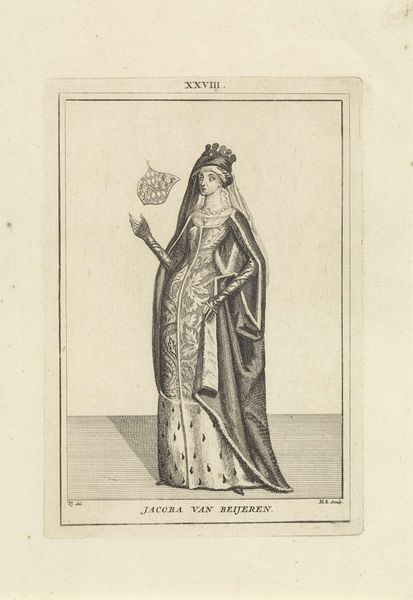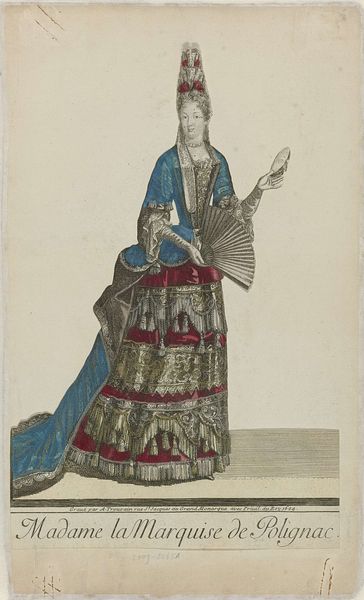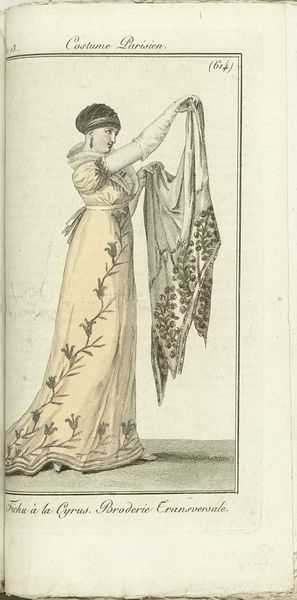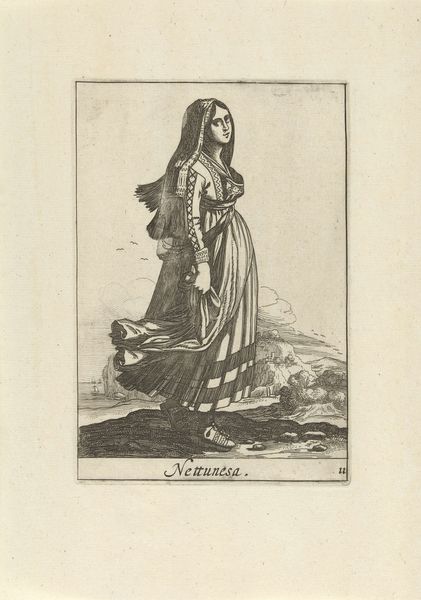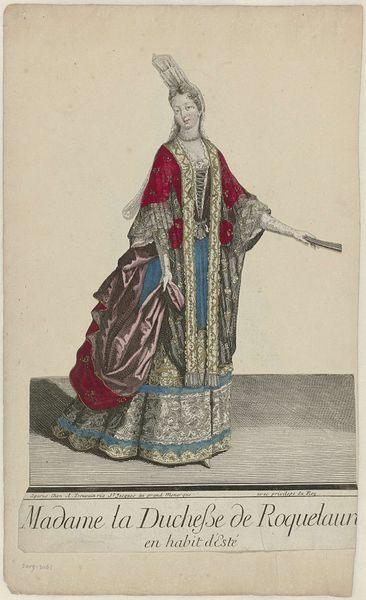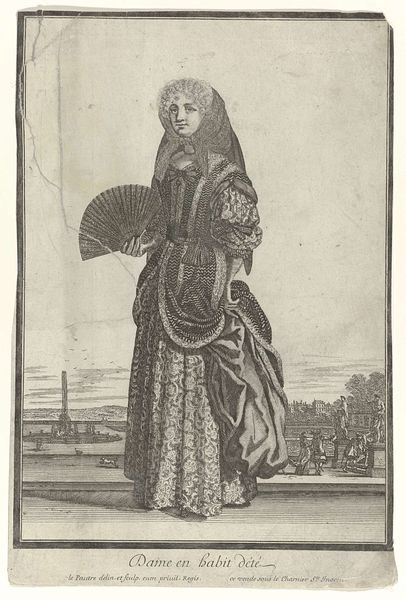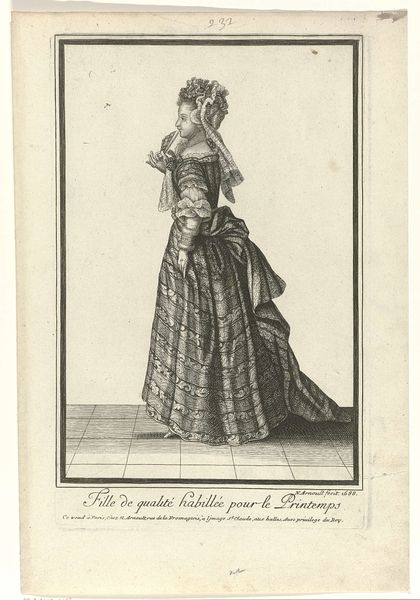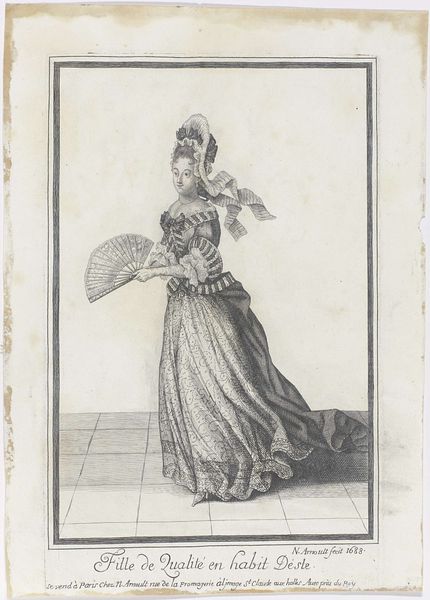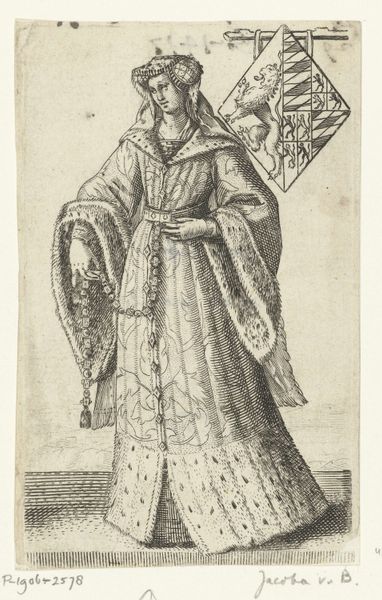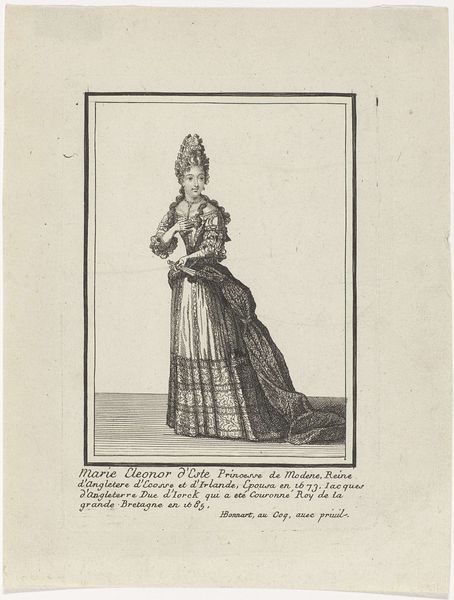
print, engraving
#
portrait
#
baroque
#
dutch-golden-age
# print
#
old engraving style
#
figuration
#
history-painting
#
academic-art
#
engraving
Dimensions: height 192 mm, width 135 mm
Copyright: Rijks Museum: Open Domain
Curator: This engraving, created in 1745 by Hendrik Spilman, depicts Maria van Bourgondië. Editor: My initial feeling is one of regal restraint. The muted tones and detailed, yet precise lines evoke a sense of formality. I find the figure is composed and still. Curator: As a piece rooted in the Dutch Golden Age and academic art traditions, it presents a stylized, idealized portrait. The work speaks to how powerful figures were immortalized through reproductive prints like this one. What do you make of its function in perpetuating an image of female leadership? Editor: Visually, the engraving strikes me as highly symbolic. Beyond the mere representation of Maria, we see indicators of her status—the heraldic shield, for instance, or the very particular headdress. How did the symbolism surrounding Maria function in Dutch visual culture, and what persistent cultural values were projected through this kind of representation? Curator: That’s astute. The cultural memory of powerful women often relies on carefully constructed images. In this print, Spilman references Maria's lineage and power, sure, but it’s interesting to me that the representation of royalty often reinforced patriarchal structures rather than challenged them. Maria may have been powerful, but the conditions under which women wielded that power often come at a steep personal cost, with little benefit for other women outside royal families. Editor: The details of her clothing draw the eye and contain information—the texture, the patterns. The veil, specifically, seems weighted with meaning; I'm curious how such a form communicated notions of both status and perhaps a type of constrained identity at the time. Curator: Indeed. Consider the implications of academic art at this moment. The aim was to represent ideal forms. And these ideals—in both body and behavior—were heavily gendered. Therefore, Maria isn't simply a woman, but an ideal woman operating within a constrained patriarchal system. It's interesting to consider how she both conforms to and, potentially, subtly pushes against those confines. Editor: That pushes me to consider the more widespread iconography and the persistent echoes of symbolic garb across historical periods and cultural contexts. Thanks, that gives me much to think about. Curator: Agreed. Placing Maria’s image within our contemporary discussions about power and representation illuminates fascinating parallels.
Comments
No comments
Be the first to comment and join the conversation on the ultimate creative platform.

